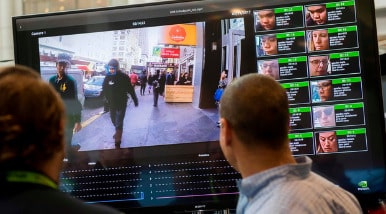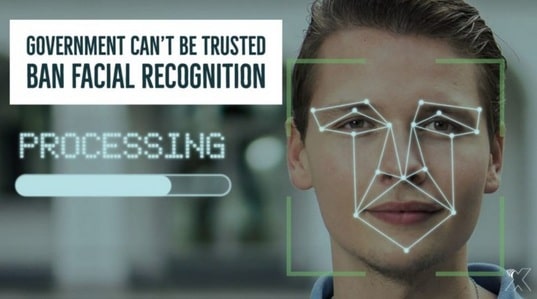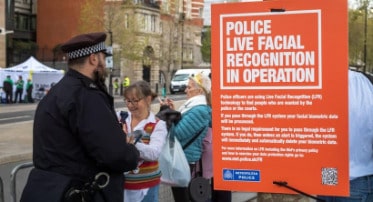
Police in Germany are employing high-definition cameras and live facial recognition to catch suspects, raising legal questions in the wake of the European Union’s AI Act.
The system, which is deployed by police in the German eastern State of Saxony and in Berlin, can process facial images “with a time delay of a few seconds,” the Berlin public prosecutor’s office told German media outlet Netzpolitik.
In March this year, the Berlin Senate Department for Internal Affairs also confirmed to lawmakers that the system was used in the country’s capital, according to news outlet Heise.
“Facial recognition software has been used by the Berlin public prosecutor’s office in two sets of proceedings in the area of cross-border gang crime,” the Department stated.
The prosecutor’s office noted that it does not see this as comprehensive surveillance. However, legal experts and lawmakers such as Die Linke’s Niklas Schrader have been criticizing the use of the technology. Live facial recognition has been particularly controversial in the negotiations on the EU’s new AI regulation. According to the rulebook, the use of this technology in public places is banned but there are exceptions for law enforcement.
“The use of biometric facial recognition from police vehicles is a serious infringement on the personal rights of even those who are not affected. By borrowing the relevant technology from Saxony, Berlin is gradually creating the conditions to implement it across the board,” says Schrader.
Details of the surveillance system have been kept under wraps but it is thought to be linked to the Personal Identification System (PerIS) used by the Saxony police. The system, created by Bremen-based Opto Precision, was first introduced as a pilot project in 2019 to combat serious cross-border crime. The pilot ended in August 2023 but the system continued to be used in the city of Görlitz near the border with Poland.
In a statement last year, a spokesperson of the Ministry of the Interior said that automatic biometric data is the exception and not the rule in the use of PerIS and can only be carried out if the legal requirements are met.
Mexican tourist spot introduces facial recognition
The Mexican island of Cozumel is beefing up its security with facial recognition. The popular cruise ship destination received its Command and Control Center (C2) which officially became operational last week.
The Center will help manage the island’s 262 surveillance cameras outfitted with facial recognition, video analytics and license plate reading (LPR) capabilities, local news outlet Riviera Maya News reports.
Cozumel is considered one of Mexico’s safest tourist destinations. The local authorities, however, have stated that they want to improve the perception of security on the island. Other areas in Mexico have also been investing in facial recognition surveillance, including Mexico City. The country is also building a biometric surveillance hub on its border with the United States.
Belarus increasing surveillance cameras
Belarus is expanding its network of video surveillance cameras which now reach more than 35,000 and are united in a network that uses facial recognition.
The expansion of the system is moving alongside rising repression in the country, according to the author of the Barometer of Repression in Belarus Gennady Korshunov.
“The forecast for a decline or at least a slowdown in the pace of repression, unfortunately, did not come true. The situation in Belarusian prisons and colonies is deteriorating, the authorities are increasing their ability to control and spy on Belarusians offline and online,” Korshunov told Radio France Internationale (RFI).
In 2021, the European Union sanctioned Belarusian biometrics firm Synesis and its CEO over the use of its “Kipod” facial recognition software in political oppression.


